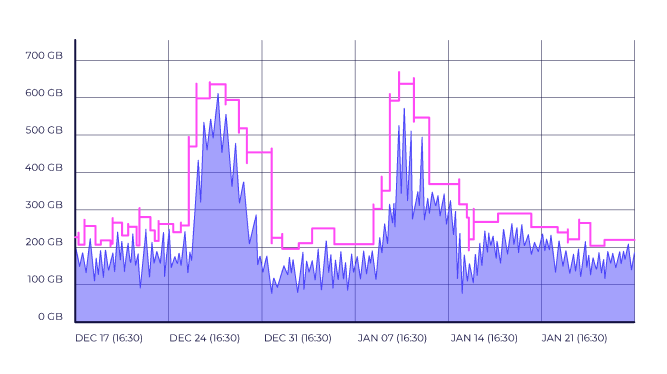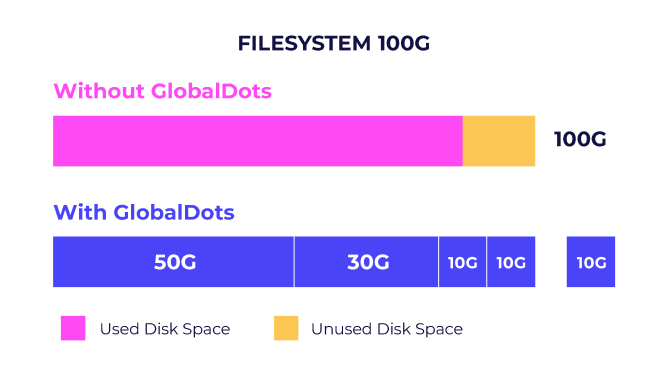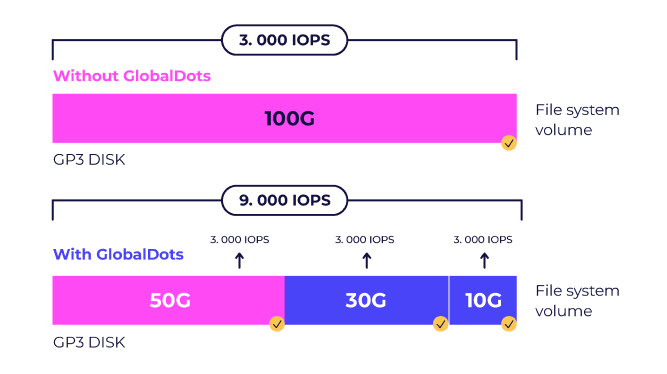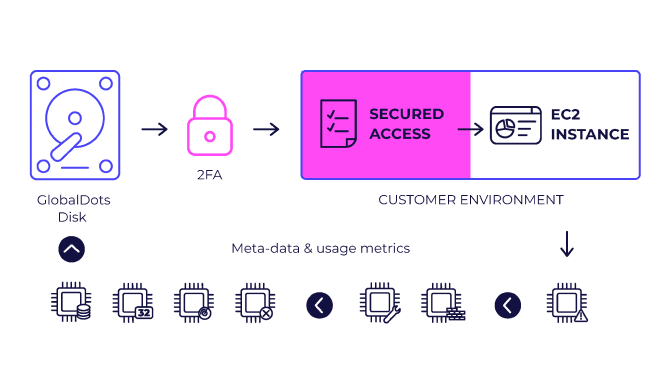Cloud Block Storage
Significantly lower your block storage expenses while boosting efficiency with one-touch implementation.

-
No more Overprovisioning
Pay only for the disk space you need
-
No more Downtime Risk
Benefit from 99.999% uptime
-
No more Ops for Cloud Storage
Optimize your block storage with only 3 clicks & deliver
-
Up to X10 Performance Improvement -
Up to 67% Savings on storage -
Up to 75% Disk Utilization
Case Study: How One AI-Driven Media Platform Cut EBS Costs by 48%

Maximizing Efficiency with Innovative Solutions
At GlobalDots, our drive is fueled by hunting for groundbreaking solutions. We introduce them to our lineup only after they’ve proven to offer a positive ROI through our curation process. This approach empowers our clients to manage their spending effectively.
Our Block Storage Optimization solution empowers you to maximize your resources—both human and capital—by enabling your block storage volumes to automatically adjust capacity in sync with the real-time demands of your applications.

FAQs
-
What is block cloud storage?
Block cloud storage is a type of cloud storage service where data is stored in fixed-size blocks with unique identifiers. It offers scalability, efficiency, and high availability by storing data across multiple availability zones. Users can easily allocate storage space and scale their storage needs as required. Popular examples include Amazon Elastic Block Store (EBS), Google Cloud Block Storage, and Microsoft Azure Block Storage.
-
What is block storage in cloud computing?
Block storage is commonly used for applications requiring high-performance, such as databases and virtual machines, due to its ability to provide fast and reliable access to data.
Block storage in cloud computing refers to a method of storing data in discrete blocks rather than as files.
-
What is block level storage?
Block-level storage is a method of storing data where information is divided into fixed-sized blocks and stored on a storage device, typically without any file system structure. Each block is individually addressable, allowing for efficient data retrieval and management. This approach is commonly used in storage area networks (SANs) and cloud storage systems, offering high performance and flexibility for various applications such as databases and virtual machines.
-
What is an example of block level storage?
An example of block-level storage is Amazon Elastic Block Store (EBS) in Amazon Web Services (AWS). EBS allows users to create storage volumes that can be attached to EC2 instances as block devices, providing persistent block-level storage for databases, file systems, and other applications requiring low-latency access to data.
-
What is block vs object storage in the cloud?
Block storage in the cloud similar to traditional hard drives. It is ideal for applications requiring low-latency access to data, such as databases and virtual machines. Object storage, on the other hand, stores data as objects with associated metadata, providing scalability and durability for large-scale applications like content delivery networks and big data analytics.



















